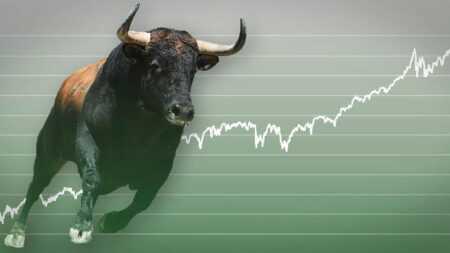Prominent entities in the XRP community have reignited discussions on the long-term valuation of the token.
In particular, they are suggesting that a $10,000 price target might not just be realistic for XRP but could be conservative.
Notably, leading the conversation this time are the Rowen Exchange and John Squire, a commentator with 510K followers on X. The argument centers around institutional adoption, supply dynamics, and XRP’s potential role in global finance.
How Institutional Adoption Could Drive XRP to $10,000
One of the strongest cases for XRP’s explosive growth is institutional adoption. Rowen Exchange argues that if major banks, payment processors, and governments increasingly use XRP for cross-border settlements, demand could surge, forcing a price increase.
It noted that XRP’s total supply is 100 billion tokens. Meanwhile, the actual circulating supply is about half that quantity due to escrow releases and long-term holdings.
The theory is that if institutions begin hoarding XRP for liquidity purposes, a supply squeeze could follow, driving prices up exponentially.
Rowen Exchange believes that, unlike retail-driven speculation, institutional usage brings sustained liquidity and volume, pushing prices higher over time.
The exchange uses these arguments to stress that a $10,000 price is not crazy but even a conservative estimate for XRP’s future. Notably, XRP is currently selling at $2.76, and reaching $10,000 would require an astonishing growth of 362,218%.
At this price, XRP’s market cap would be around 1 quadrillion dollars. However, in his commentary, John Squire stressed that market cap analysis is irrelevant in XRP’s case.
XRP to $10000 is not crazy
“Market Cap Does Not Matter”
To explain why he believes XRP is destined to reach $10,000, John created a hypothetical scenario based on the global financial market.
John painted a scenario where a tokenized global economy is worth 1 to 2 quadrillion dollars, and XRP handles just 10% of that. To support this level of trading and trillions in daily settlements, XRP’s price “must reach” $10,000 or more.
John also pointed out that moving $1 trillion daily doesn’t require $1 trillion in liquidity; just $20 billion will suffice. This perspective assumes that 2 million XRP tokens, each worth $10,000, are used up to 50 times daily to execute $1 trillion in transactions.
Another argument John made for why the $10,000 price “is attainable” is XRP’s circulating supply of only 57.7 billion tokens.
According to John, for global liquidity to function properly, the price must be high enough to accommodate massive volumes. So, he reiterates that market cap analysis doesn’t matter.
The Bottom Line
These arguments suggest that if XRP becomes the backbone of institutional liquidity and global settlements, reaching $10,000 might not be speculative—it could be a conservative estimate.
However, critics continue to dismiss these arguments as wishful thinking rather than anything concrete.
Read the full article here









